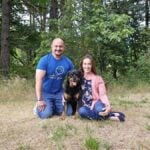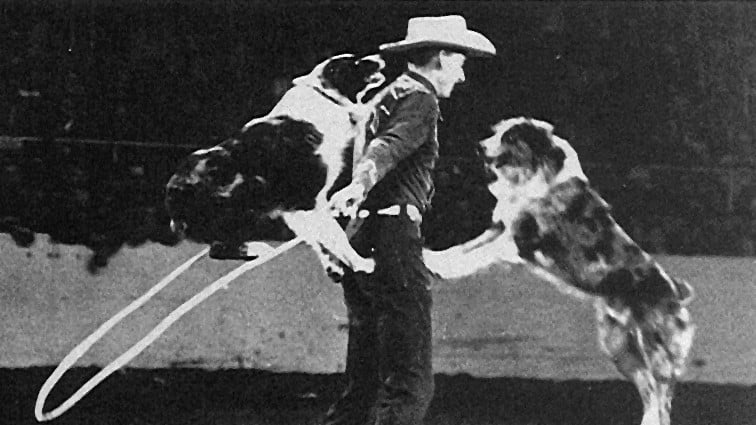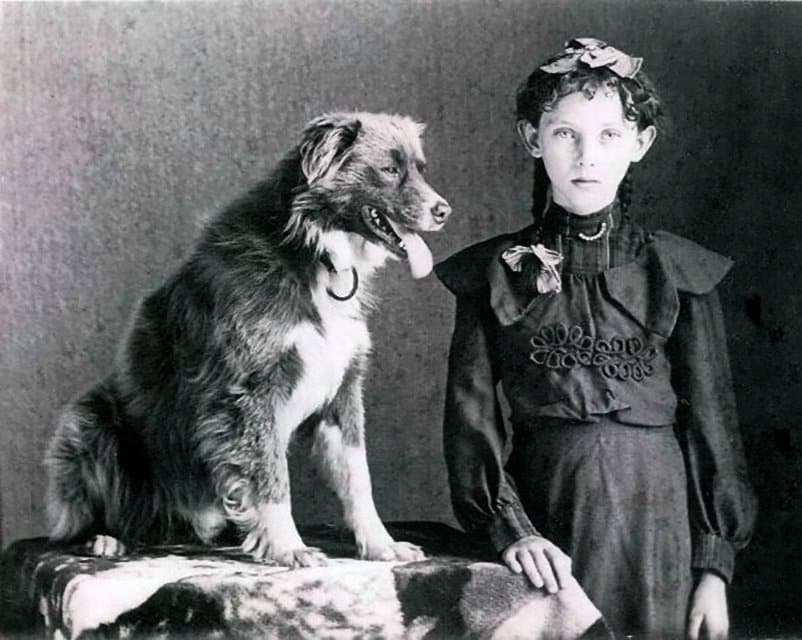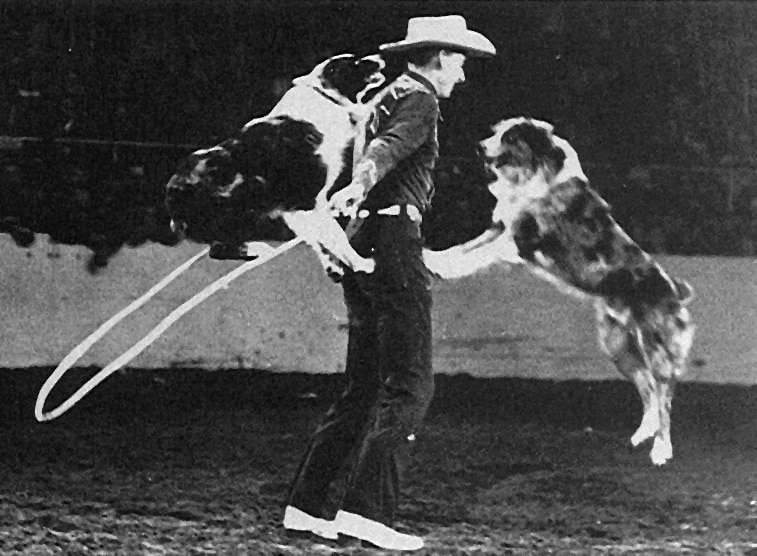


Home » Australian Shepherd History

This article was originally published in Showsight Magazine, January 2014 issue.
These colorful dogs acquired their name as they arrived in the U.S. with the boatloads of Australian sheep and their Basque sheepherders. This took place in the late 1800s and early 1900s as the American wool market was blossoming. The English Coulie and the Smithfield Sheep Dog may have been used in their early development. Although there are many theories as to the origin of the Australian Shepherd, this breed, as we know it today, was developed exclusively in the western United States.

The American stockman continued the development of this breed while maintaining the versatility, keen intelligence, strong herding instincts, and eye-catching appearance that originally won their admiration. Each individual is unique in color and markings, and displays an unsurpassed devotion to its family. Their popularity began to rise throughout the western United States as stockmen were impressed with the abilities of these capable dogs.
In reality, the dogs were not officially registered until the 1950s in the United States. You can find pedigrees which state, “Ashurst Ranch dog bred to Frusetta Ranch female.” That was the initial stage of this relatively young breed…hastily scratched notes in a rancher’s files. The dogs that worked were kept, bred, crossbred, prized, shared and sold. The precise history is fragmented, even the origins of our name merely conjecture. Our dogs were not exhibited in conformation events until the 1960s at rare breed events. Breed historian Phil Wildhagen noted (circa 1970s) that, “the Australian Shepherd breed “is relatively unknown here in the East.”
The “Aussie” rapidly rose in popularity with the boom in Western riding after World War II. They became known to the general public via rodeo performances, horse shows, movies, and television appearances. Their inherent versatility and trainability made them a useful asset on American farms and ranches. It wasn’t until the 1950s and 1960s, when Jay Sisler, a rodeo contestant and rancher from Idaho, teamed up with Shorty, Stubby, and Queenie that the Australian Shepherd gained national attention. Jay and his Aussies delighted rodeo audiences throughout the U.S. and Canada with an array of tricks that have yet to be equaled, even today. So unique and delightful were these dogs that Walt Disney Studios produced two movies featuring them, “Stub, The World’s Greatest Cow Dog,” and “RUN Appaloosa, RUN.”
Because of his popularity, some of today’s Aussies still have Sisler lines in their pedigrees. Two other foundation lines include Jaunita Ely’s breeding, a major foundation for today’s herding dogs and Nick Smedra, whose dog out of Fletcher Wood’s stock, went on to produce the famous Heard/Flintridge lines, which appear in most of today’s conformation pedigrees.
